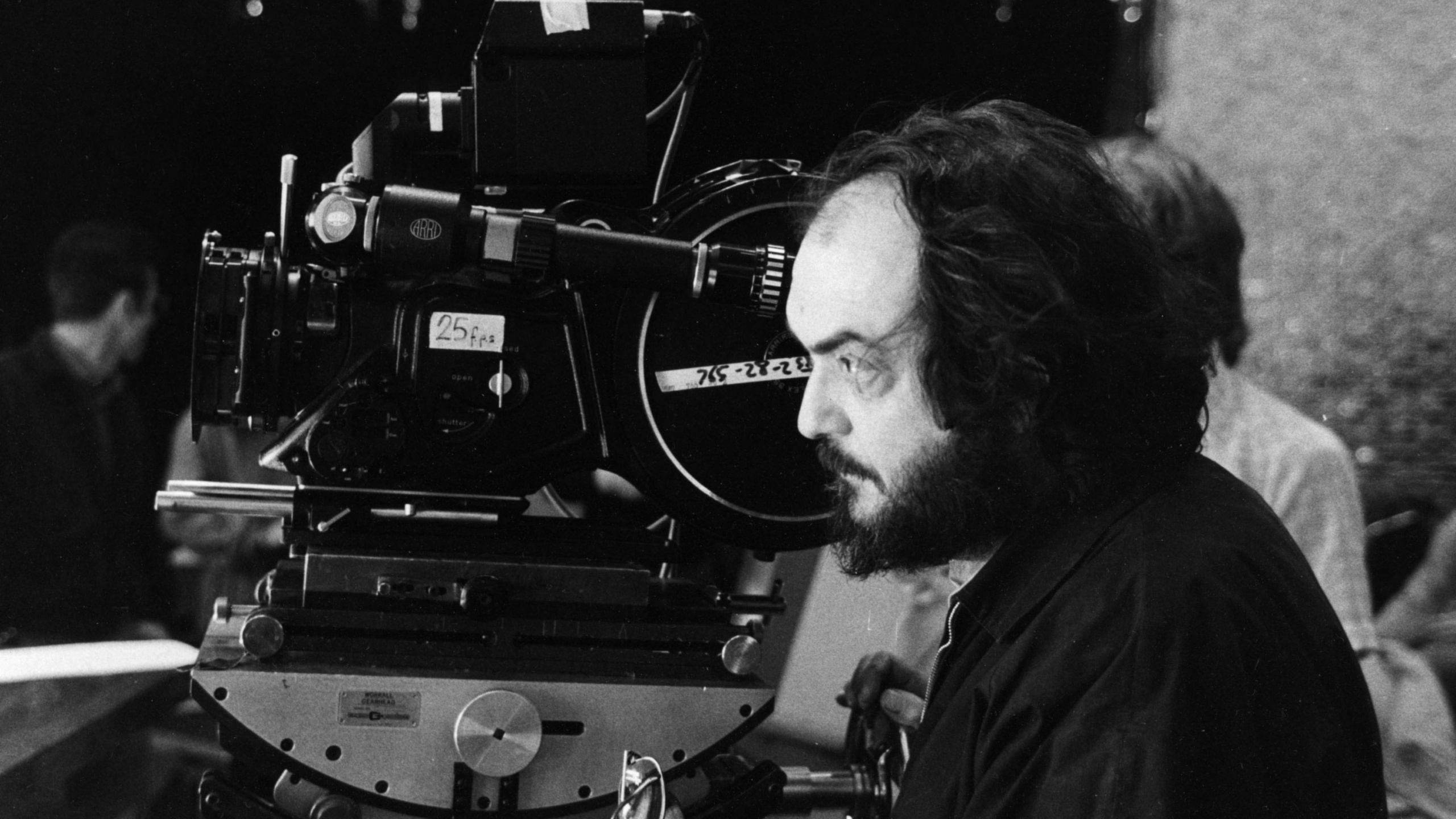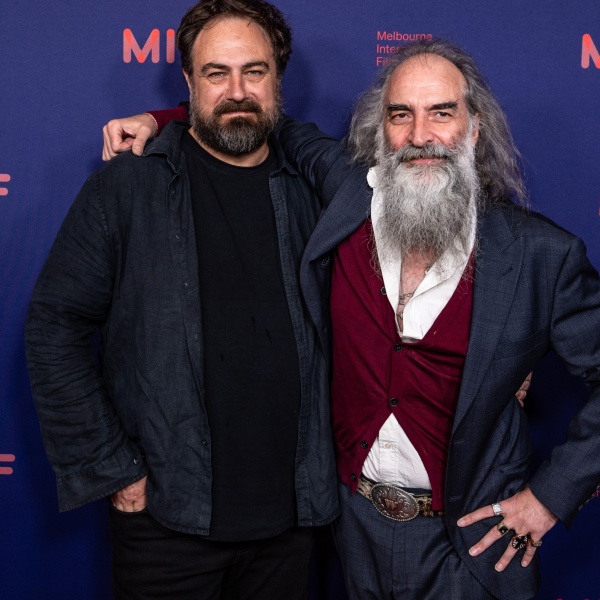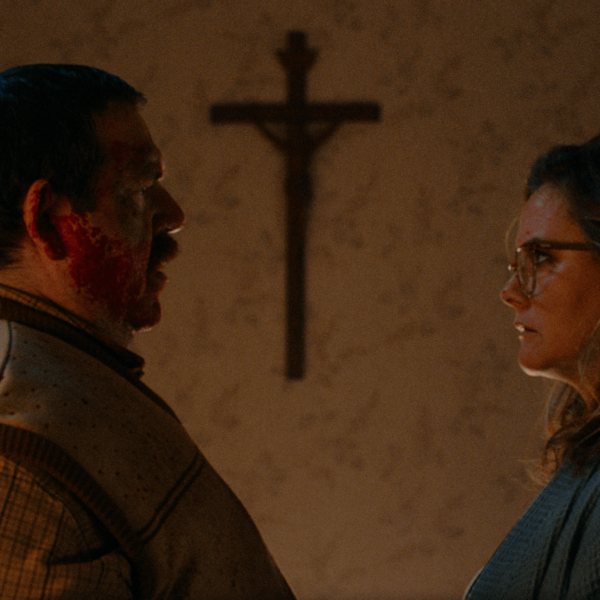You can’t teach someone to be an artist; as Steven Soderbergh once noted, if you could “we’d all be Stanley Kubrick.” Yet you can teach the craft necessary for artists to express themselves, and in the case of many of the books that follow, you can provide the inspiration necessary to unlock an artist’s best and most exciting ideas. Here are 13 must-read volumes for any aspiring director, books that examine the job from a variety of technical, artistic, and logistical angles. Some are more nuts-and-bolts manuals on how to use the camera, others — the ones written by working directors like Bethany Rooney, Mary Lou Belli, and Ken Kwapis — survival guides for anyone who wants to sustain a career in the industry. Taken together, they provide a comprehensive look at what it takes to direct and arm filmmakers with the tools they need to succeed.
‘John Badham On Directing‘ by John Badham
The director of “Saturday Night Fever,” “WarGames,” and “Blue Thunder” lays out everything he knows about filmmaking — which, unsurprisingly, turns out to be a hell of a lot — in this highly readable and often hilariously candid guide to realizing one’s directorial goals on both a macro and a micro level. The second edition of the book, which Badham published in 2020, is especially valuable for its lengthy section on surviving the world of episodic television; this is a highly specialized field with specific rules that have largely been left unaddressed by directing textbooks (with a few exceptions listed below), and Badham’s experiences directing series like “Psych” and “Supernatural” yield a wealth of helpful tips for navigating its complexities. Even more essential: a “director’s checklist” Badham provides to explain the core questions that must be considered every time a director approaches a scene. As if Badham’s own observations weren’t enough, he supplements them with quotes from dozens of his peers — Patty Jenkins, Steven Soderbergh, and Oliver Stone are just a few — that pack the book’s nearly 300 pages with essential reflections on the art and craft.
‘Directing the Camera: How Professional Directors Use a Moving Camera to Energize Their Filmsby Gil Bettman
If you’re a fan of the moving camera of Steven Spielberg, Robert Zemeckis, and Kathryn Bigelow and want to know how to apply their techniques to whatever scene you happen to be shooting, this is the book for you. Bettman, an episodic TV director and low-budget action auteur who teaches film at Chapman University, is brilliant at breaking down action sequences piece by piece and explaining how lenses, composition, and editing work together to sell stunts; his shot-by-shot analysis of the foot chase in “Point Break” alone is worth the price of this book. Yet his lessons extend beyond big-budget set pieces; in a particularly enlightening passage on how Cameron Crowe crafted dual moving masters for “Jerry Maguire,” Bettman illustrates how a moving camera can invigorate an intimate dialogue exchange. “Directing the Camera” is a perfect blend of theory and application, as Bettman posits several guiding principles that any director can apply to any scene, then shows them in action through a generous array of stills and diagrams taken from specific films and TV shows. (The book’s website offers additional materials, including film clips as well as some invaluable raw footage from Zemeckis’ “What Lies Beneath.”)
‘The Visual Story‘ by Bruce Block
There are dozens (hundreds? thousands?) of books devoted to screenwriting construction, but Bruce Block’s “The Visual Story” is one of the few volumes to acknowledge what should be an obvious fact: that visual structure is as important in filmmaking as narrative structure. With an abundance of helpful illustrations, diagrams, and stills, Block breaks down how space, color, movement, line and shape, and other visual elements can be used to generate a visual story that correlates to the literary qualities of a film’s script. It’s a revelatory guide to how our eye perceives elements within the frame and how those elements can be organized to generate emotional effects; it also provides language a director can use to communicate with department heads to execute a film that reflects a unified vision. Best of all, its lessons are easily applicable to virtually every form of narrative filmmaking, from car commercials and independent character studies to epic adventure films and web series.
‘Master Shots‘ by Christopher Kenworthy
More than merely a collection of interesting shots from great movies — though it is that — this book is an inspirational guide to thinking visually that is essential for any beginning director. Kenworthy’s approach is simple: In this book and its sequels and spinoffs (which include not only additional “Master Shots” volumes but the indispensable “Shoot Like Scorsese” and “Shoot Like Tarantino”), he analyzes specific camera moves and lens choices to explore why and how they impact an audience. By using examples from over a hundred films (among them “The Shining,” “The Double Life of Veronique,” and “Crouching Tiger, Hidden Dragon”), Kenworthy presents a compendium of endless ways of thinking about camera placement and what it can express; best of all, although some of his examples come from big-budget films, he consciously chooses only shots that can be recreated with minimal financial resources and equipment. The idea is not to convince the reader to copy or imitate but to teach them how to think like a filmmaker; one might start out trying to replicate the shots Kenworthy describes, but the way in which it increases the reader’s visual literacy will quickly lead to new, original ideas.

‘But What I Really Want to Do is Direct: Lessons From a Life Behind the Camera‘ by Ken Kwapis
Ken Kwapis made his filmmaking debut 40 years ago, and in the decades since has directed everyone from Nick Nolte and Robert Redford to Big Bird, Robin Williams, and Fran Drescher. Working in a wide array of genres and styles, he’s directed hundreds of hours of film and television, most famously the pilot and finale of the American incarnation of “The Office.” Unsurprisingly, his book on directing — a combination memoir, how-to guide, and analysis of other filmmakers’ work — contains a wealth of practical information, particularly when it comes to the psychological and managerial aspects of running a set and the challenges of navigating both success and failure (and the necessity of establishing one’s own personal definitions of both). While there are plenty of great insights here into technical issues of staging, scoring, and editing, what really sets the book apart is its attention to the question of a director’s deportment: How should one behave on a set in order to get the best results from one’s cast and crew? It sounds like a simple question, but using examples from his own career as well as those of directors he has studied, Kwapis reveals how complicated, terrifying, and exhilarating figuring out the answer can be — and in the process, serves up over 300 pages of pure gold.
‘Making Movies‘ by Sidney Lumet
Like Ken Kwapis, Sidney Lumet had a solid 40 years of experience directing film and television behind him when he wrote this 1995 tome, and it remains the gold standard for straightforward, no-nonsense guidance on how to make a movie. Lumet takes the reader through the filmmaking process from beginning to end, starting with the script and ending with the answer print, and while some of his personal biases may be questionable (such as his assertion that the sound mix is “the only dull part of moviemaking”), the utility of his information is not. Using examples from a career filled with classics (“Dog Day Afternoon,” “Network,” “The Verdict”) while also acknowledging the films where he didn’t quite get it right and why, Lumet clearly and concisely demystifies filmmaking; in the process, he also tells plenty of delightful behind-the-scenes stories that make his book a must-read not for fans as well as creators. Roger Ebert’s assessment of “Making Movies” says it well: “I am sometimes asked if there is one book a filmgoer could read to learn more about how movies are made and what to look for while watching them. This is the book.”

‘On Filmmaking: An Introduction to the Craft of the Director‘ by Alexander Mackendrick
Alexander Mackendrick is best known among cinephiles as the director of one of the greatest movies ever made, “Sweet Smell of Success,” but to film students at California’s Institute of the Arts from 1969 to 1993, he was also known as one of the field’s all-time great teachers. Filmmakers and critics like James Mangold, F.X. Feeney, and Terence Davies studied under Mackendrick and sang his praises for years, which made this 2004 publication of his teaching materials a cause for celebration. Editor Paul Cronin assembles Mackendrick’s lectures, assignments, storyboards, and diagrams in a volume that draws from a wide array of artists and disciplines; there are lessons here not only from filmmaking greats like Alfred Hitchcock and Orson Welles (not to mention examples from Mackendrick’s own films) but from Aristotle, Kierkegaard, and other great thinkers. The result is a rigorous way of looking at and thinking about filmmaking, both one’s own and that of others, that synthesizes the technical, literary, and philosophical elements of cinema in a way that’s both completely original and extremely thought-provoking.
‘The Five C’s of Cinematography‘ by Joseph V. Mascelli
Although the title implies it’s a book on cinematography, this is really a book about directing — and it’s still one of the best, over 50 years after it was first published. Mascelli’s “five C’s” are camera angles, continuity, cutting, close-ups, and composition, and by delving into each topic in detail, he provides a crash course in filmmaking fundamentals related to cinematic time and space, point of view, screen direction, and more. While the Badham, Kwapis, Lumet, and Rooney/Belli books on this list have more to offer in terms of set behavior and actors, and the Bettman and Kenworthy tomes take a more modern approach, this is still the most comprehensive and useful introduction to filmmaking technique I know of; in terms of pure aesthetics, one could read this book and this book alone and be able to direct a feature film with confidence and competence.
‘Directors Tell the Story: Master the Craft of Television and Film Directing‘ by Bethany Rooney and Mary Lou Belli
This book by veteran television directors Bethany Rooney and Mary Lou Belli is one of those rare volumes that really digs into episodic television and where it differs from movies; at the same time, its most valuable lessons — on blocking and visual design, working with actors, organizing the shoot, etc. — are equally applicable to feature work. What really separates “Directors Tell the Story” from other books on directing is its accessible description of the kinds of things more technique-oriented publications leave out; while Rooney and Belli are certainly attentive to technical and aesthetic issues, they also devote a great deal of time to things like set politics, getting and keeping jobs, and figuring out the economic and artistic hierarchies on any given show. Their material is well organized, like Lumet taking the reader through each step of production, and each section has overviews at the beginning and end that can be used as checklists on set and during prep. Along the way, there are dozens of contributions from other film and television professionals, not just directors but also showrunners, actors, script supervisors, producers, editors, and others who offer their perspectives.
‘Thinking in Pictures: The Making of the Movie “Matewan”‘ by John Sayles
When this book came out in 1987, it was the literary equivalent of a pitcher of ice water in the desert; there were very, very few useful texts on directing and almost none from the point of view of someone who had actually done it. Using his then-recent film “Matewan” as a focal point, Sayles created a clearly organized and practically oriented how-to guide that remains essential reading for its thoughtful, step-by-step description of every decision that went into the making of his masterpiece. There is a wealth of easily applicable information in Sayles’ chapters on writing, pre-production, shooting, and post, all of it illustrated with exhibits including breakdown sheets, investor forms, call sheets, storyboards, music cue sheets, the shooting script, and many other key documents. As an independent filmmaker known for his skill at maximizing limited resources, Sayles is particularly good at teaching tricks any director can use to make their movie look better than its budget, and his tips for all types of problem-solving will prove useful for experienced filmmakers and beginners alike.
“‘The Church of Baseball: The Making of “Bull Durham”‘ by Ron Shelton
It’s probably no surprise that Ron Shelton’s memoir of the making of his fast, funny, sweet, and profane debut feature is fast, funny, sweet, and profane. It’s also the best book ever written about what a first-time director really has to go through from conception to release: about the lessons learned, the battles that must be waged, and the shifting priorities and allegiances that must constantly be navigated to will a movie into existence. Shelton brilliantly explains and explores how the writing process intersects with directing on the set, providing an abundance of valuable tips about how to write for a budget and how to write scenes that actors can play; he’s also completely honest about the times when he learned that he had made mistakes, writing scenes that killed the rhythm of the movie or were set in the wrong location, and writes with humor, affection, and occasionally anger about how he fixed the problems even while dealing with an onslaught of obstacles (some unavoidable, many the result of petty power plays by others). There’s also plenty of material on how to work with actors coming from the guy who facilitated some of Kevin Costner, Susan Sarandon, and Tim Robbins’ best work and hilarious stories about some of the collaborators who didn’t work out. In the end, the book makes clear what a miracle a great movie really is — and gives the reader the tools to help those miracles come into being.
‘Hitchcock’ by François Truffaut
First published in 1966, this career-spanning interview in which one great director (Truffaut) interrogates another (Alfred Hitchcock) about his work has never been topped as a comprehensive introduction to the craft of filmmaking. Enlivened by Truffaut’s enthusiasm for and appreciation of his films, Hitchcock expounds his theories on every aspect of directing, clearly and concisely explaining how to use all the tools of cinema to convey ideas and emotions with maximum force. The film-by-film structure allows the reader to witness Hitchcock’s evolution as an artist, and the plentiful stills illustrate Hitchcock’s principles in action. For sheer density of useful information and lively insight, this book is impossible to beat.
‘Hits, Flops, and Other Illusions: My Fortysomething Years in Hollywood’ by Edward Zwick
This memoir by the director of “Glory,” “About Last Night,” and “The Last Samurai” (as well as groundbreaking television series like “Thirtysomething”) is filled with enthusiasm for the pleasures of filmmaking but also catalogs the indignities the author has suffered with candor, clarity, and humor. The behind-the-scenes stories, especially about dealing with difficult actors and studios, are often terrifying, usually funny, and always edifying — they collectively yield a survival guide for Hollywood that’s essential reading for anyone aspiring to merge personal expression with mass entertainment. The book is also, like Shelton’s, an articulate and deeply personal piece of film history that gives a sense of a Hollywood very different from the transitional one we all exist in now; it’s a bit nostalgic for the loss, but also cautiously optimistic about the future. The book’s great value is its honesty, as Zwick reveals his own neuroses and mistakes as openly as he reveals those of his collaborators; his vulnerability is relatable, encouraging, and inspiring.



